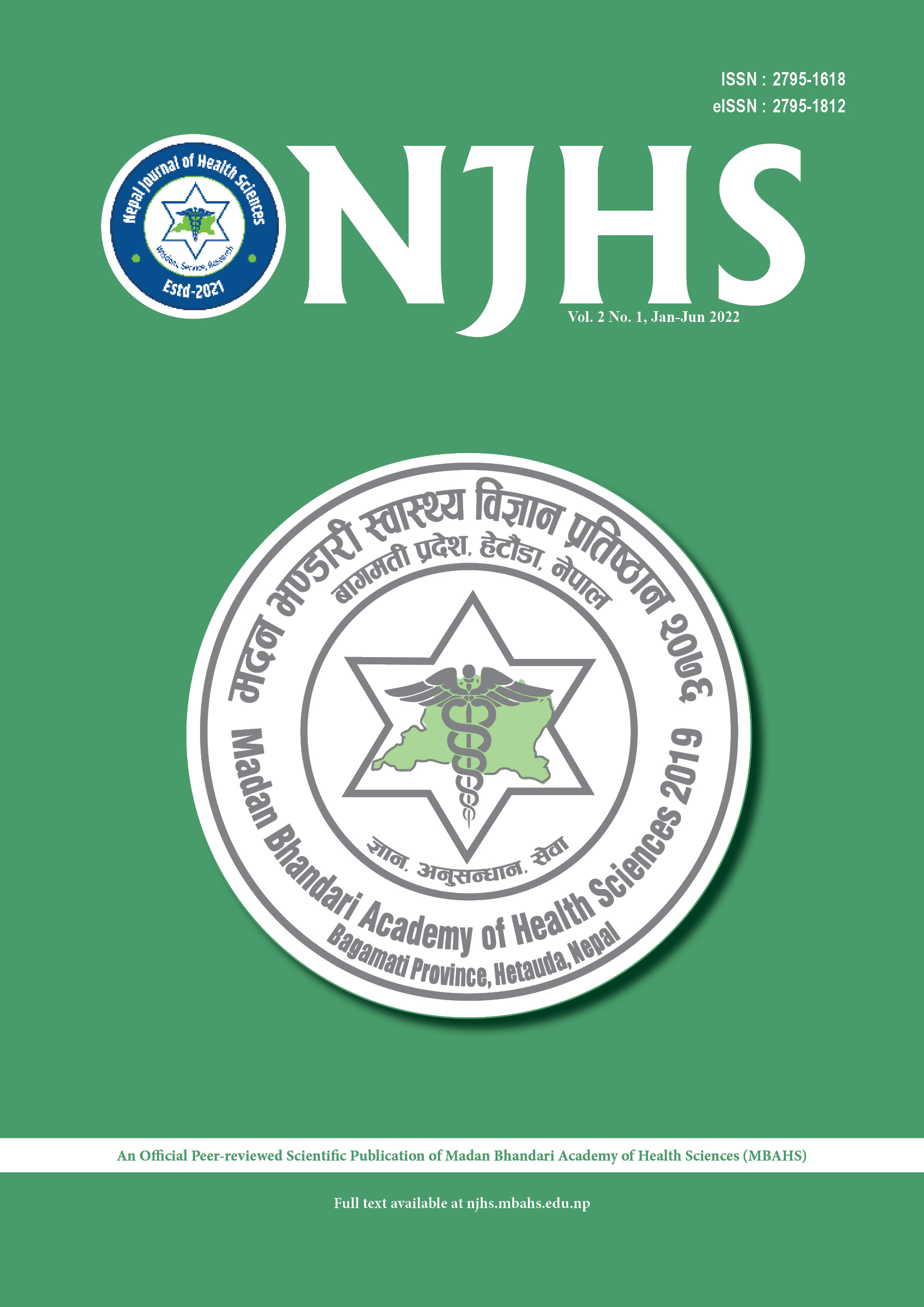Clinical Profile and Short-Term Outcome of Cerebral Venous Thrombosis in a Nepalese Population: A Retrospective Study
DOI:
https://doi.org/10.3126/njhs.v2i1.47167Keywords:
Cerebral, outcomes, thrombosis, venousAbstract
Introduction: Cerebral venous thrombosis (CVT) is a rare cause of stroke. The increased awareness among the physicians and the suspiciousness of the myriad of its clinical presentation with increased availability of investigation modules and therapeutic options has led to a decrement of mortality and morbidity. The study intends to assess the clinical etiological profile of patients of CVT and also to assess short-term outcomes and if any factors are associated with it.
Methods: It was a hospital-based retrospective, observational cross-sectional study at a tertiary care center in Kathmandu among adult CVT patients from August 2019 to August 2021. Clinical, etiological, and radiological data, the outcome at discharge, and any factors influencing this were assessed where possible. Data were analyzed using SPSS 25 software. Analysis of the descriptive data was performed and independent factors influencing short-term outcome (admission date < 7 days) were analyzed.
Results: There were a total of 15 cases included in the study. The study showed female predominance (66.7%. The mean age of the patients was 48.87 years. Four (26.7%) patients had hypertension. The history of oral contraceptive pill (OCP) use was among five (33.33%) females. A significant association was present with direct signs in CT scan (p=0.02), and low erythrocyte sedimentation rate (ESR), p= (0.02).
Conclusions: OCP and hypertension are increasingly recognized as independent risk factors for CVT. The presence of direct signs in the CT head and the presence of high ESR have independent predictive value in assessing short-term outcomes.





